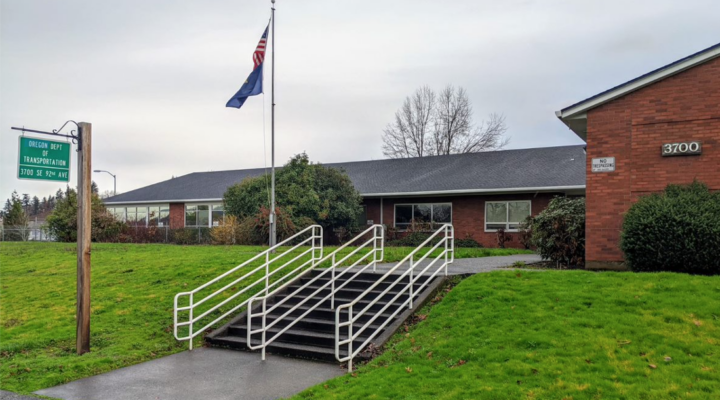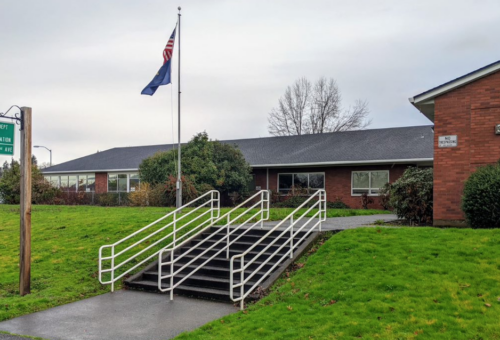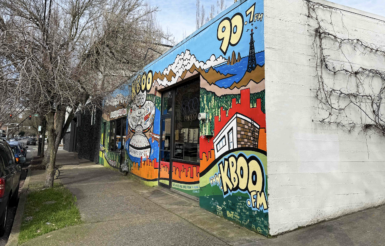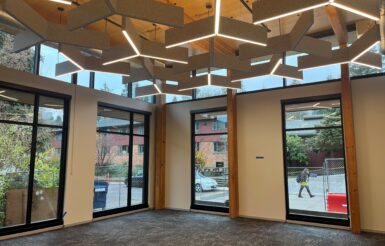Project Overview
High-performance HVAC solution helps right-size ventilation and comfort.
When the Oregon Department of Transportation (ODOT) moved their construction administration personnel into the Barlow Building, built in 1956, they knew that the aging HVAC system was not well-suited for the new occupancy. After years with no air conditioning and high energy bills, ODOT began an HVAC upgrade by installing three mini-split heat pump units to provide heating and cooling to select offices.
Satisfied with the improvements to their building’s comfort and efficiency, ODOT went on to add six more heat pumps throughout the building. While the new units sufficiently conditioned the entire indoor environment, the building was still served by a labor-intensive, gas-steam boiler that was ten times bigger than the heating needs required. Furthermore, the boiler only tempered ventilation air and its constant-volume ventilation fans provided more than four times the required ventilation. All told, this wasteful equipment accrued more than $6,000 in additional energy costs and $3,500 in additional maintenance costs per year.
When ODOT project manager Luis Umana attended a local ventilation training and learned about the very high efficiency DOAS approach to HVAC, he learned that a high efficiency energy- or heat-recovery ventilator (ERV/HRV) could nearly eliminate the ventilation load and provide the precise amount of ventilation air required by any occupancy level. In one fell swoop, this move helped ODOT move on from their inefficient boiler system and its costly maintenance, maximize energy and money savings, and improve indoor air quality and comfort.
ODOT leaves energy waste in the dust.
This high-performance approach to HVAC combines high-efficiency equipment with design best practices, including:
- Using an electric heat pump system that meets ENERGY STAR® performance standards
- Pairing the heating and cooling with a high-efficiency heat/energy recovery ventilator (HRV/ERV)
- Right-sizing the heating and cooling equipment
- Decoupling the HRV/ERV from the heating and cooling
- Optimizing the ventilation fan energy
The very high efficiency DOAS approach provides better control of thermal comfort and improved indoor air quality for the Barlow Building’s occupants, while reducing the building’s HVAC energy use by 79%.*
ODOT’s upgraded approach to HVAC is helping them save 14,252 kWh and 7,168 therms per year while benefiting occupants, operators and owners in a variety of ways:
- Better control of ventilation air by delivering the precise amount of filtered 100% outside air to the space based on occupancy, with no recirculation
- Increased occupant comfort through improved temperature stability and the ability to create zones with unique temperature controls
- Improved occupant productivity by improving thermal comfort and control
- Lower energy bills and maintenance costs
- Addition of more than 1,000 sq. ft. of added shop space where the boiler was removed

Conversion summary
| Pre-existing HVAC system: | New HVAC system: |
|---|---|
| 9x Daikin RMXS48LVJU ductless heat pump units 2x fixed speed 5 horsepower fans 1x 3,100 MBH Gabriel gas steam boiler | 9x Daikin RMXS48LVJU ductless heat pump units (installed between 2018–2019) 1x Ventacity VS3000 ERV (installed 2020) |
*compared to the pre-conversion system of a boiler, ventilation fans and nine mini-split heat pumps.
Healthier air without the energy waste.
By providing 100% filtered outside air, ODOT’s high-efficiency HRV helps them decrease contaminant spread. The introduction of fresh outside air and avoidance of recirculated air minimizes the circulation and introduction of contaminated particles—an important way to 1) minimize the spread of viruses like Covid-19(1) and other toxins inside the building, and 2) reduce entry of harmful particles from outside, including during periods of poor outdoor air quality.
Moreover, unlike competing high-ventilation HVAC systems, this approach does not increase energy costs despite providing 100% filtered outside air. Combining high-efficiency design principles with high-efficiency products, such as ENERGY STAR rated heating and cooling equipment and a high-efficiency HRV, allows building operators to avoid compromises while they create a safe, healthy and efficient indoor environment.
Results
In addition to saving energy and money, the ODOT team also collected a $13,620 incentive from Energy Trust of Oregon for their high-efficiency HRV. And, by avoiding many hours of maintenance per week from consolidated HVAC operations, the team also saved more than $3,500 annually on reduced labor. Now they enjoy easy-to-operate ductless heat pumps and an HRV, instead of spending their time on the labor-intensive maintenance requirements of an old boiler, hot water pump, ventilations fans and a water treatment system.
The decommissioning of this old equipment also freed up significant building space. Now able to convert the boiler room to shop space and storage, ODOT extricated office space that had previously been used for the shop. This allowed them to relocate a crew into the Barlow Building, eliminate a lease, and further reduce operational costs for the region.
1 Based on findings from NEEA’s 2021 Covid-19 Risk Reduction Strategies and HVAC System Energy Impact Report: betterbricks.com/resources/covid-19-hvac-risk-reduction-strategies.



